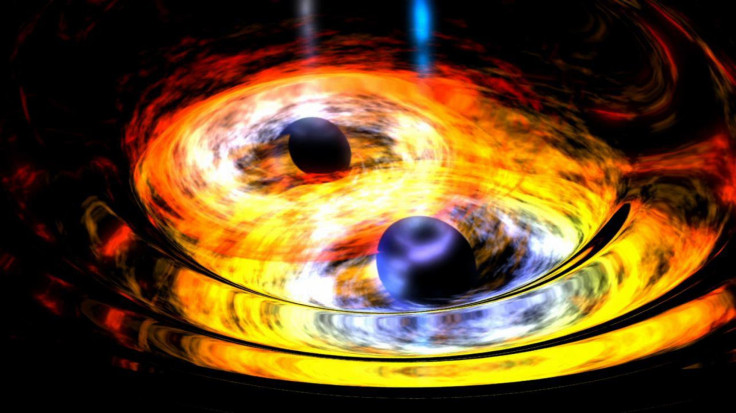Two Supermassive Black Hole 'Dance Partners' Spotted At The Center Of Distant Galaxy
NASA's Wide-field Infrared Survey Explorer, WISE, has observed two supermassive black holes at the center of a distant galaxy. WISE discovered the circling black holes, and additional observations confirmed the discovery and provided further insight to some peculiar behavior in the galaxy.

The supermassive black holes, WISE J233237.05-505643.5, will soon merge, forming an even bigger object. For researchers, this discovery will lead to new insights on how supermassive black holes grow. According to NASA, it is believed supermassive black holes grow by consuming nearby material or when two galaxies collide, causing the two supermassive black holes to merge. The galaxy in question is located approximately 3.8 billion light-years from Earth.
Led by Chao-Wei Tsai, from NASA's Jet Propulsion Laboratory, the team of researchers analyzed millions of images collected by WISE. The space telescope was launched in 2009 and scanned the entire sky, in infrared light, twice before being put into hibernation in 2011.The massive amount of data collected by WISE was released to the public in 2012. The research on the two supermassive black holes was published in the Astrophysical Journal.
According to the researchers, the two supermassive black holes are close together and one of them is affecting the other's jets. Tsai said in a statement, "We think the jet of one black hole is being wiggled by the other, like a dance with ribbons." Co-author Peter Eisenhardt said the team first thought they were looking at a starbust galaxy that was producing new stars at a "furious rate."
Following the observation by WISE, the Australian Telescope Compact Array and the Gemini South telescope, located in Chile, were used to confirm the sighting of the remote black hole binary. The Australian Telescope Compact Array observed the black hole jet abnormality while the Gemini telescope discovered clumping in one of the black hole's accretion disks due to the neighboring black hole.
As the two black holes merge they are separated by only a few light-years, notes NASA. It is unclear how far apart these black holes are, although they are not in the final stage of their merger. According to NASA, the final stage of a black hole merger will send out gravitational waves and the space agency is currently working on technology that will be able to detect this phenomenon by observing their effect on pulsars, blinking neutron stars. As for WISE, it has been awakened from hibernation to look for near-Earth asteroids and is now named NEOWISE.
© Copyright IBTimes 2024. All rights reserved.






















